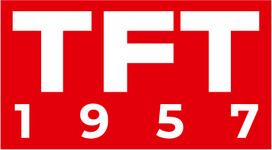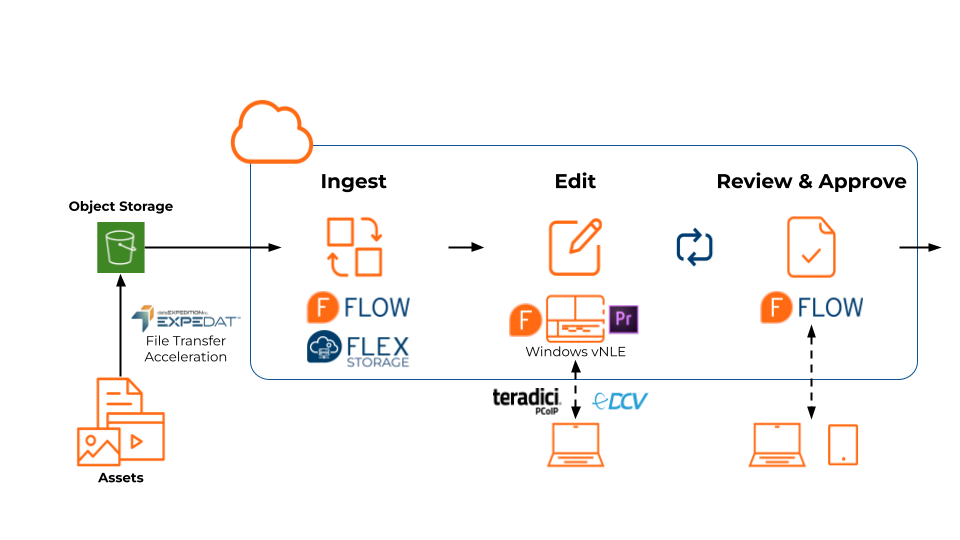360 seconds. News & Commentary — Weekly program. The main news for broadcasters.
Hosts
Philip Grossman, Film and Television Industry Veteran and Technology Consultant, Mary Ann Seidler, First Light Broadcast.
Presenter
Maria Kholodova, TKT1957.
Program Topics
- EditShare FLEX: the new MAM and storage software solution EditShare FLEX provides a cost-effective route for editing in the cloud, remote collaborative working, and secure cloud archiving. It will be highlighted at the MPTS Show in London on May 11th and 12th.
- Mo-Sys: the latest Virtual Production technologies At MPTS Mo-Sys will demonstrate the StarTracker camera/lens tracking system and highlight VP Pro XR, its LED content server solution for Virtual Production.
- TVU G-Link Encoder: 8K live IP transmission The TVU G-Link Encoder now supports low-latency, 8K IP video transmission over commodity internet connections, and the new TVU RPS Link Encoder allows multi-channel REMI production over cellular networks.

EditShare FLEX
Maria Kholodova: EditShare Flex provides a cost-effective route for editing in the cloud, remote collaborative working, and secured cloud archiving. It will be highlighted at the MPTS show in London on May 11th and 12th. Mary, I know that you were curious about the fact that a lot of our news today has to do with the cloud and I believe you have some questions for Philip on that.
Mary Anne Seidler: Yes I did. Philip, as we both know,most of the booths especially in the West Hall were all about the cloud. When people say that they want to go into the cloud, what challenges would you say they are most likely to run into?
Philip Grossman: I think connectivity is the biggest issue. You go from an environment of having 10gig connections or multiple 1gig connections from every desktop to an entire organization sharing a 1gig connection to the cloud or maybe a 10gig connection. The other challenge is identifying the total cost of ownership. I guess it’s the best way to define it, only that you don’t own anything.Because there are so many little costs that crop up such as the egress cost, or request cost. That’s the most challenging thing for individuals trying to transition to the cloud. The cloud has various benefits to different companies but oneneeds to really identify what problems they are trying to solve rather than just moving to the cloud because that’s what everyone is doing.
Mary Anne Seidler: Do you notice that a lot of broadcasters are concerned for a very practical reason because they could get things through their practical budget, but getting it through their operating budget is not so easy, and that’s where the cloud seems to pull people in?
Philip Grossman: It’s gone back and forth. In my former organization, we used to make a joke that capital is free, so we’d want to do everything on capital. When budgets started getting constrained, you can’t do capital so sometimes it’s easier to go operational. The funny thing is that in 2018 or 2019, the accounting standards board made some rule changes that allow you to take yearly operational budgets like the cloud in this instance, and turn them into a capital expense, in a way giving you the best of both worlds. It really is interesting that accounting to your point is driving some of these decisions as opposed to truly looking at some of the problems they are supposed to solve.
Maria Kholodova: Philip, do you have any specific thoughts about EditShare Flex?
Philip Grossman: EditShare has really been pushing. They’ve been a very hardware-centric on-premisesolution, allowingthemto be designed specifically for this type of work which is very demanding on a system, and they can now integrate that into their camera tracking systemmaking it easier for the end customer to adopt virtual productions. That was all the rage at NAB, if you didn’t have a virtual production screen in your booth, you just weren’t doing the right thing. It’s interesting to see and I think we will see more of it. It’s basically replacing the green screen.
Mary Anne Seidler: Who do you think this is geared towards?
Philip Grossman: They are really starting to focus on smaller production organizations. The costsare coming down and being simplified. You don’t have to hire 4-5 individual experts that can handle each element of the process, you can now have an integrated solution.
Maria Kholodova: Mary I was wondering if you have specific insights on what you think this might mean for audio or in general what the virtual productionsphere will mean for audio?
Mary Anne Seidler: We are certainly seeing the lines blur between radio and television. And we are seeing more radio stations saying that they want to get video as part of their products even though some radio announcers don’t particularly like that. But it’s got to be something simple to use and iscost-effective and there are also some podcasters. Podcasters aren’t always small entities, they can be a rather elaborate production and I believe this would certainly be perfect for them.
Maria Kholodova: Many thanks to our expert Mary and Philip. See you on our next segment.
Production — TKT Media Group.










